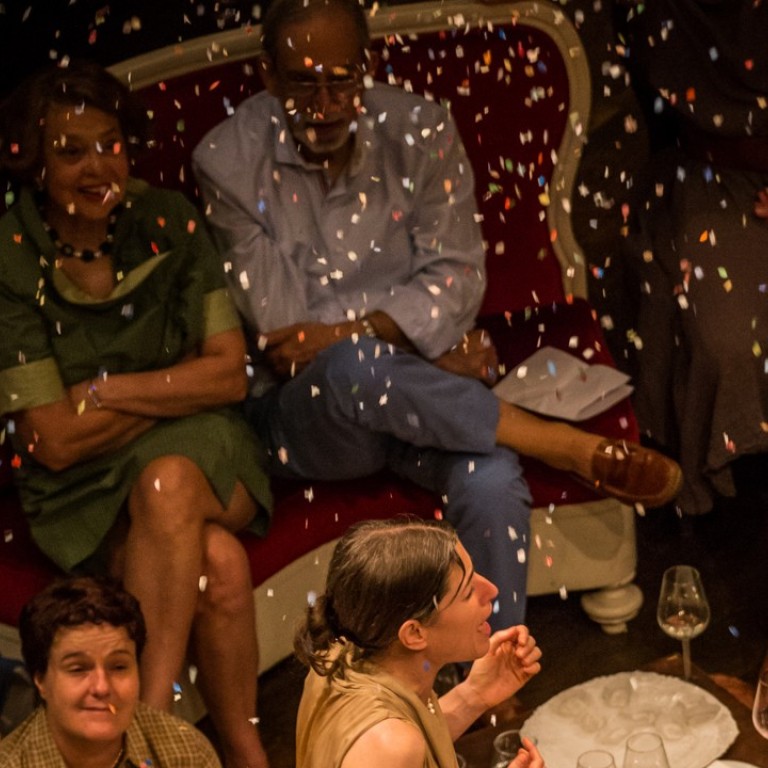
How immersive theatre shows ‘The Living Room’ and ‘Zoo as Metaphor (2)’ ‘break fourth wall’
Workcenter of Jerzy Grotowski and Thomas Richards and orleanlaiproject will take Hong Kong audiences to world that borders between reality and fantasy
“It is springtime and you are walking to meet your lover,” theatre director and performer Thomas Richards says.
“You stop under a tree, where you feel a light breeze on your face and hear the leaves softly rustle.
“Here, in this moment, with no thoughts of the past or plans for the future, when you are completely occupied with the present, a volcano erupts within you and your hair stands on end.
“You suddenly understand the smallness of your nature in the immensity of human existence.
“At this moment, you become transparent.”
One of the main aims of interactive theatre is to ‘break the fourth wall’ that defines the space of performance and spectators
This transparency is what Richards – mentored by the late Jerzy Grotowski, who is considered one of the greatest theatre directors of the 20th century – aims to evoke in his immersive theatre production The Living Room.
The performance is coming to the Hong Kong Cultural Centre’s Studio Theatre on November 13 and 14 as part of Hong Kong’s ninth New Vision Arts Festival.
“Transparency is not a metaphor, it is something literal,” Richards says.
“We know this – that in moments in life we become transparent to a bigger stream. It is an active philosophy, a lived-in practice.
Audience shares tea and snacks with actors …
“The title of The Living Room makes reference to different aspects to ‘livingness’, and one essential aspect of livingness is the meeting between the individual and the transcendent flow – when the quality of life becomes so brilliant and shiny that the room becomes living.”
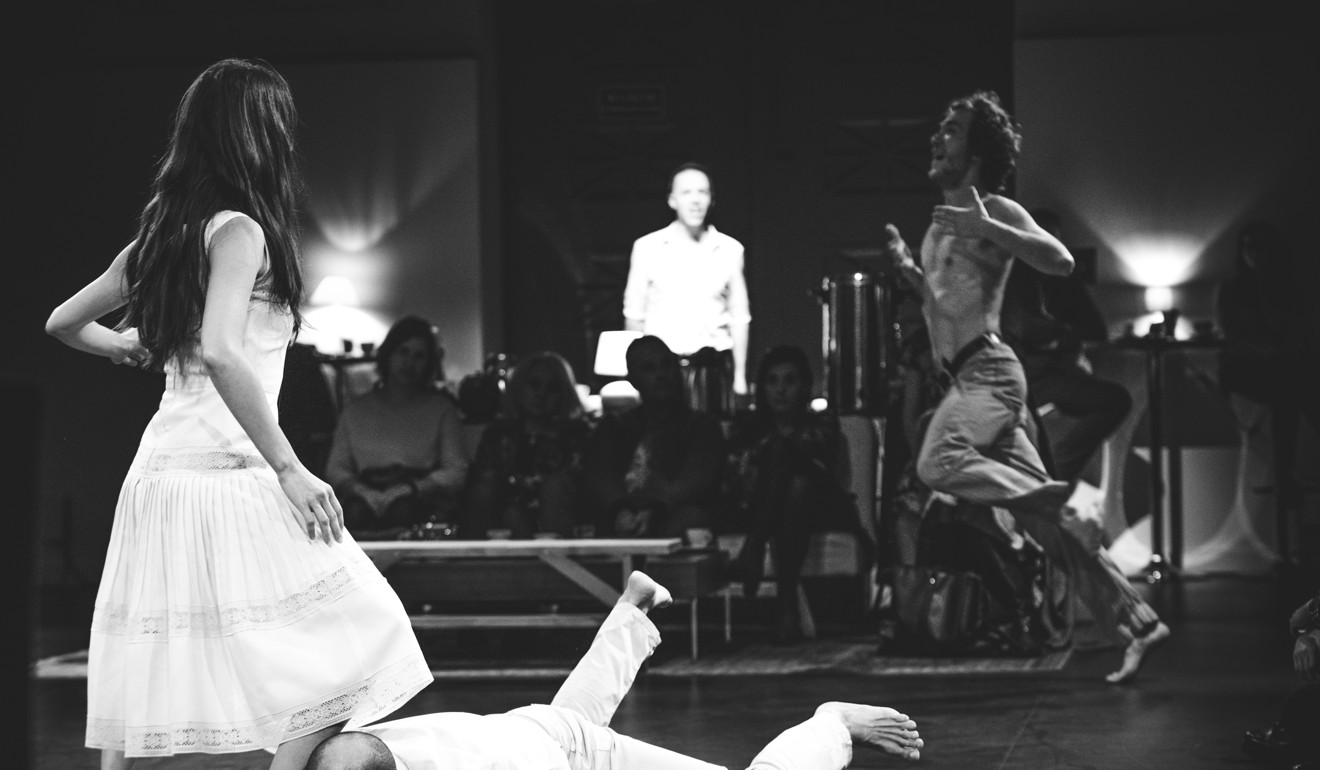
The performance, created by the Workcenter of Jerzy Grotowski and Thomas Richards, which was set up in Pontedera, Italy by the Polish-born Grotowski in 1986, evokes a living room, with the audience treated like guests.
Members of the audience drink tea and eat snacks together with the actors and can interact with Richards and his team before and after the performing work.
The main character in ‘The Underground: A Response to Dostoevsky’, even with the best intentions, keeps setting into motion events that end up contrary to his original wishes
The Living Room will not be the only play breaking down traditional boundaries of the theatre that will be performed during the biennial festival, which runs from October 19 to November 18.
Richards will also be staging The Underground: a Response to Dostoevsky, based on Fyodor Dostoevsky’s 1864 novella Notes from the Underground at the Studio Theatre on November 16 and 17 – while Hong Kong experimental theatre company, orleanlaiproject, will present Zoo as Metaphor (2) at the Museum of Medical Sciences from October 25 to 30.
‘Experience’ nights – and days – in the museum
Zoo as Metaphor (2) blurs the boundaries between an art exhibition and a performance, with the audience led on a tour by performers to experience days and nights in the museum.
The performance takes place in various rooms and locations within the museum.
Janice Poon, lecturer of playwriting and the academic project coordinator at the School of Drama at the Hong Kong Academy for Performing Arts, says that community or participatory theatre in Hong Kong is growing in popularity.
“Audiences have been actively responding to the performances and some of the current theatre practitioners are motivated to develop their profession out of those experiences,” she says.
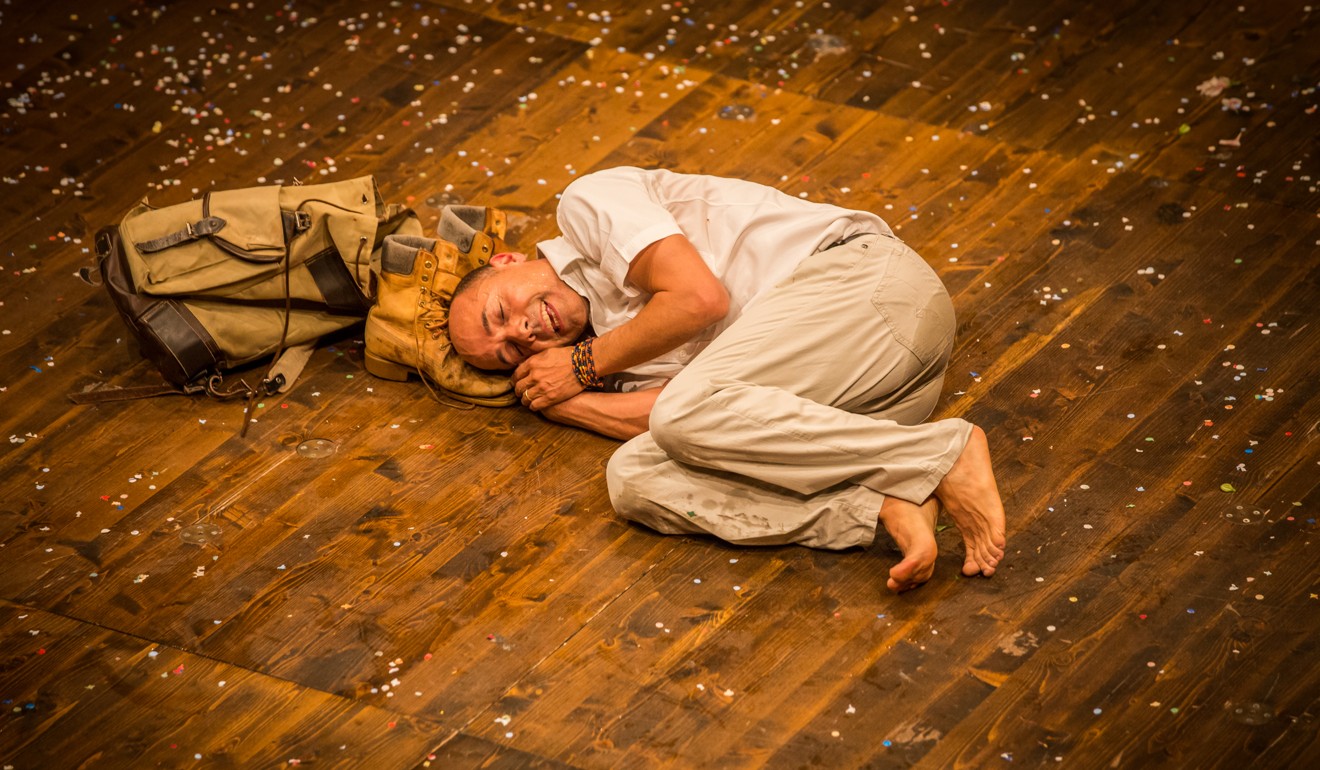
While interactive, or immersive theatre, can take many forms, most of it enjoys unsettling our preconceived notions of the roles and relationships of spectator and performer.
The “fourth wall” is a theatre convention that became commonplace on the 19th century stage.
The convention states that an actor imagines he is acting behind a wall that separates him from his audience.
I’m sure we’ve all experienced having an impulse that has the best intentions, but then as it arrives at a conclusion, we find it has become something we didn’t want it to become. It’s a tragic, sad aspect of humanity
The audience can see through the wall, but he cannot. He behaves as if there is no one there watching him in intense detail.
Yet some modern theatre works do break down this wall.
“One of the main aims of interactive theatre is to ‘break the fourth wall’ that defines the space of performance and spectators,” says Poon.
“It’s also a form of theatre that stems out of the constant quest to investigate the relationships among performers and spectators.”
… when our best intentions go awry
In The Underground, Richards begins the performance as a director who walks up on stage from the audience.
[We] felt the stifling nature of the bubble in which a performer lives. We go on stage, the audience in the dark, we live what we live, they applaud ... so we ask how can we live this process of work on one’s self with others
He talks about a night terror – waking up after a nightmare with an awareness of your own mortality.
When you “are conscious, in a flash, of your own mortality, then you have a chance to make true, or meaningful decisions”, Richard says.
The rest of the performance – a response to a dilemma Dostoevsky sets up in his novella – then plays out within this framework.
The dilemma is that the main character, even with the best intentions, keeps setting into motion events that end up contrary to his original wishes.
“I’m sure we’ve all experienced having an impulse that has the best intentions, but then as it arrives at a conclusion, we find it has become something we didn’t want it to become,” Richards says.
“It’s a tragic, sad aspect of humanity. Just think of religions, they start with an impulse towards a certain quality of the human experience, but sometimes five steps down the road, an institution is formed, and it does the opposite of what was intended.”
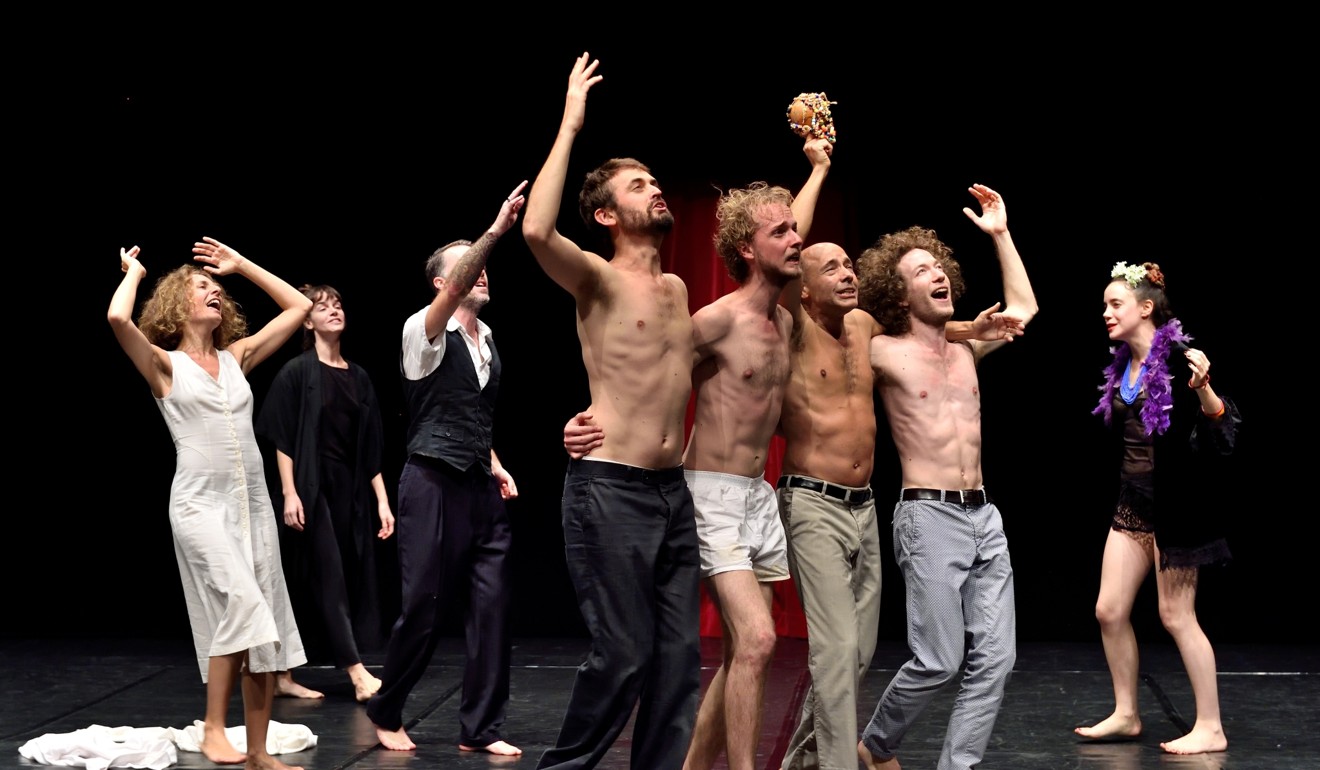
The performance builds to a climax, the director being increasingly called on stage, before a “kind of liberation, a realisation” occurs, he says.
[Polish theatre director] Jerzy Grotowski was interested not in the primary effect of the performer on the public, but the effect on the person doing the performance
“As director, I am engaged in this response, and the actors and I try to help one another jump over the impossibility that Dostoevsky has analysed so meaningfully and is posing to us.
“In this moment, the dramaturgy is more and more dissolving, and the characters become less characters and more the actors themselves trying to overcome Dostoevsky’s dilemma.”
This awareness of the actor’s own inner experience of performance was a key aspect of Grotowski’s work.
In developing his approach beyond theatre in the 70s and 80s, Grotowski travelled the world learning about different ritual and ceremonial traditions, including those in India, Mexico and Haiti.
His approach at the Workcenter then redefined the relationship between performer and spectator.
Performances aim to be ‘real and alive’
“Grotowski was interested not in the primary effect of the performer on the public, but the effect on the person doing the performance,” Richards says.
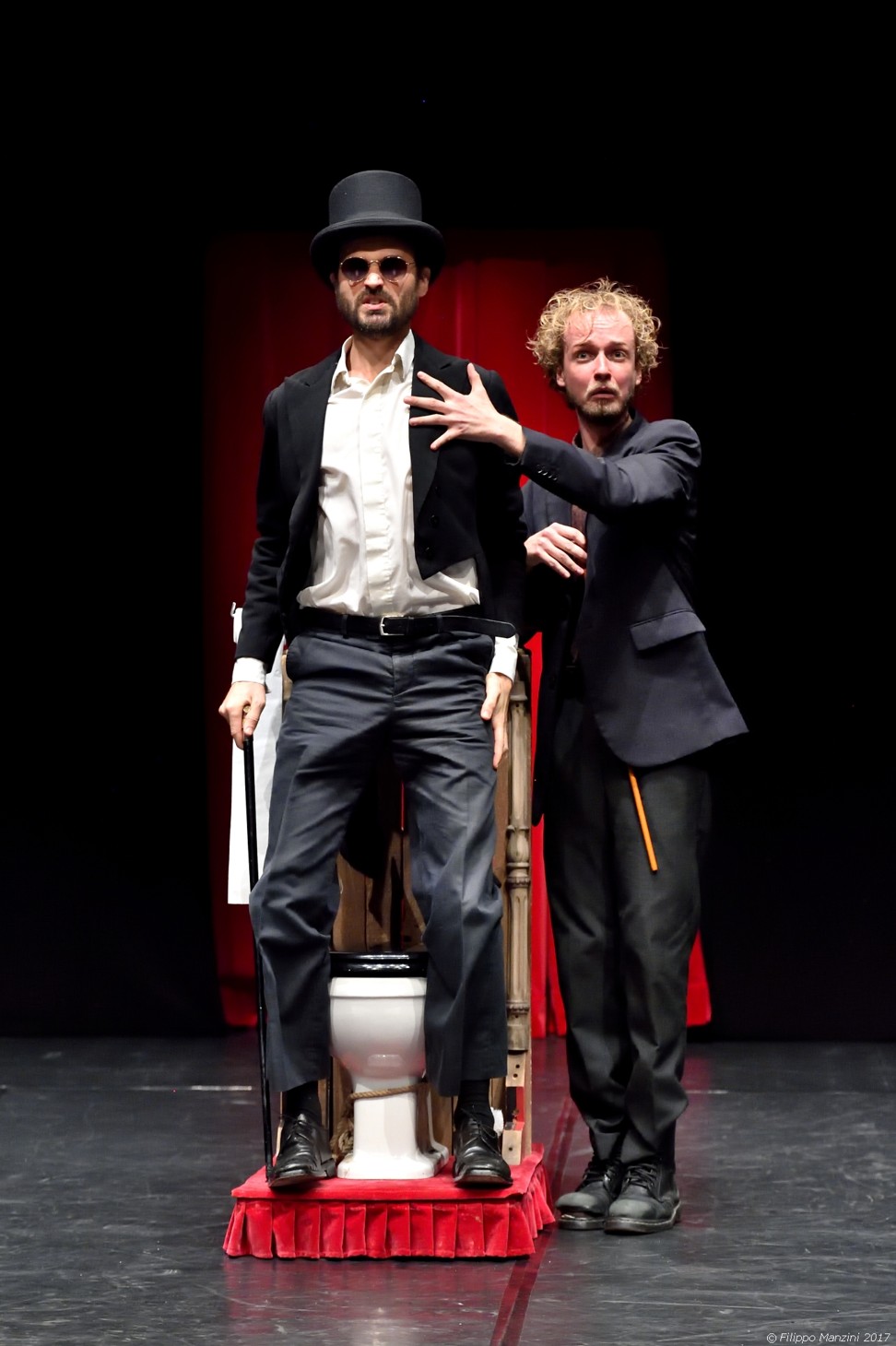
“I was taught this inner aspect. For the lack of a better term, the aim is inner evolution. Many traditions in East and West have this as their goal.
“This is the essence of our work and it’s both fascinating and beautiful that in this kind of situation, the quality of the work becomes of utmost importance; it needs to be real and alive.
“Each actor, or ‘doer’ so to speak, has to be engaged in a total and complete manner – only then it becomes a ‘work on one’s self’, as Grotowski called it.”
Even on a proscenium (traditional) stage, there will be an exchange between the audience and performer.
Yet Richards says performers have “felt the stifling nature of the protected bubble in which a performer lives.
“We go on stage, the audience in the dark, we live what we live, they applaud, we go away. So instead we ask how can we live this process of work on one’s self with others.”
Jerzy Grotowski’s work has influenced generations of performers in terms of acting training and theatre aesthetics. As his protégé, Thomas Richards’ ... shows should not to be missed
In The Living Room, the performance incorporates ancient songs of tradition – a speciality of Richards’ – from the Caribbean, in dreamlike sequences.
“Spectators can perceive the way in which the songs have an impact on the energetic resources, the centres of energy, in the performer,” he says.
“Then these centres of energy awaken, they can rarefy in their quality of presence to allow for the experience of transparency.”
Through the intensification of the performer’s own experience, the audience may access a moment of their own transparency.
Transparency may come to you under a tree while walking to meet your lover, or it may be attainable through a performance in a living room, or a response to a Dostoevsky novel.
Either way, for Poon, these performances are unmissable.
“Grotowski’s work has influenced generations of performers in terms of acting training and theatre aesthetics,” she says.
“As the protégé of Grotowski, Thomas Richards has been sharing this unique spirit of theatre, which broadens our horizon as theatre makers, performers and spectators.
“These shows should not to be missed.”

